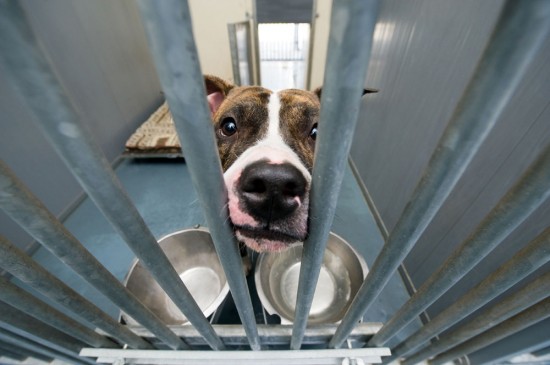

You may have heard of a condition that certain large and small dogs may suffer from called Portosystemic Shunt, and you may have wondered just how the condition is treated. Portosystemic Shunt is a condition that affects the liver function in dogs and where abnormal veins “shunt” blood around the liver instead of through it. This blood comes from the gastrointestinal tract and spleen and is full of harmful toxins which are normally filtered out by the liver. It is a condition that dog owners need to watch out for and if any symptoms are apparent, a visit to the vet is a must.
The liver plays a crucial role in the body, it is responsible for metabolising nutrients, detoxifying the body as well as cleaning the blood of any harmful substances. Should blood not flow correctly through the liver, this causes all sorts of health issues and with Portosystemic Shunt this is exactly what occurs. Clinical signs that a dog might be suffering from the condition include the following:
Dogs with the condition normally start to show signs of there being something wrong when they are two years old. However, older dogs too can start to suffer from the condition due to other liver complaints.
The condition may be congenital which means a dog may have been born with it or it may have been acquired. If the latter is the reason for a dog suffering from PSS it usually means the dog has a progressive liver dysfunction of which could be cirrohsis. However, if a dog is born with PSS, the abnormal blood vessel is normally found in the liver itself and as such is called “intrahepatic”. If it is found outside of the liver, it is known as “extrahepatic” PSS.
It is larger dogs that are prone to Intrahepatic shunts which includes the following breeds:
When it comes to “Extrahepatic” shunts, the condition is more often seen in smaller, miniature and toy breeds which include the following breeds:
A dog suffering from the condition may show signs of poor weight gain. They may also show an increased level of thirst and as such need to urinate more than usual. Dogs with PSS may also salivate a lot more, although this is one of the symptoms more commonly seen in cats who also suffer from PSS. Other symptoms to watch out for include the following:
There are also some neurological symptoms which can be quite worrying for owners to witness and these include the following:
However, there are occasions when none of the above symptoms are apparent and the dog suffering from the condition could simply be the “runt” of a litter.
Although vets are able to diagnose the condition by taking blood tests and other methods which includes urine analysis as well as abdominal ultrasound, very often the definitive diagnosis is made when surgery takes place. However, the decision to operate is more common when treating Extrahepatic PSS because it is easier to tie off the abnormal blood vessel when it is outside the liver. Another way of finding out whether there is a problem is for a test called ATT to be carried out. Vets tend to favour this test as it offers a more reliable diagnosis of liver dysfunction in dogs.
When it comes to treating dogs with PSS, this includes managing and correcting fluid, glucose and electrolyte imbalances, they are several that vets tend to favour. Treatments involve controlling any precipitation factors which includes taking a close look at the dog's diet with a view to reducing any pressure being put on a dog's liver function and as such a special diet containing less protein may be recommended.
Vets often prescribe antibiotics like Neomycin which reduces bacterial populations. With the right medical management, most dogs suffering with PSS lead a good quality of life with their condition improving and stabilising when treated for the condition, and this is especially true of dogs suffering with Intrahepatic shunts.
If the problem blood vessel can be treated by being surgically tied off, then the prognosis if very good. However, if only part of the blood vessel is tied off, the prognosis in not so good. When the condition is treated with drugs and supportive care, sometimes the outlook is poor with Intrahepatic shunts (where vessels are within the liver) being harder to treat than those found outside the liver.
With this said, it is crucial for owners to make sure their dogs are put on special diets that support liver function and this means a well-balanced diet that excludes too much protein.
If you are thinking about adopting or buying a dog that may be prone to Portosystemic Shunt, it is better to be aware of the symptoms so that if any of them rear their ugly heads, you would recognise there could be a problem, and take your dog to the vet as soon as you can. As with most illnesses and diseases, the earlier a diagnosis can be made, the quicker a treatment can be offered and this naturally means less suffering and discomfort for your four legged friend.
 The Most Common Breeds And Types Of Dogs Found In Uk Rehoming Shelters
The Most Common B
The Most Common Breeds And Types Of Dogs Found In Uk Rehoming Shelters
The Most Common B
 Handling Pets Using Most Recommended Methods For Health
Handling Pets Using Most Recommended Methods For Health
Handling Pets Using Most Recommended Methods For Health
Handling Pets Using Most Recommended Methods For Health
 Caring For Your Dog During The Winter
Caring For Your D
Caring For Your Dog During The Winter
Caring For Your D
 Caring For An Adolescent Dog
Caring For An Ado
Caring For An Adolescent Dog
Caring For An Ado
 The Cheeky Welsh Mountain Pony
The Cheeky Welsh
The Cheeky Welsh Mountain Pony
The Cheeky Welsh
Copyright © 2005-2016 Pet Information All Rights Reserved
Contact us: www162date@outlook.com